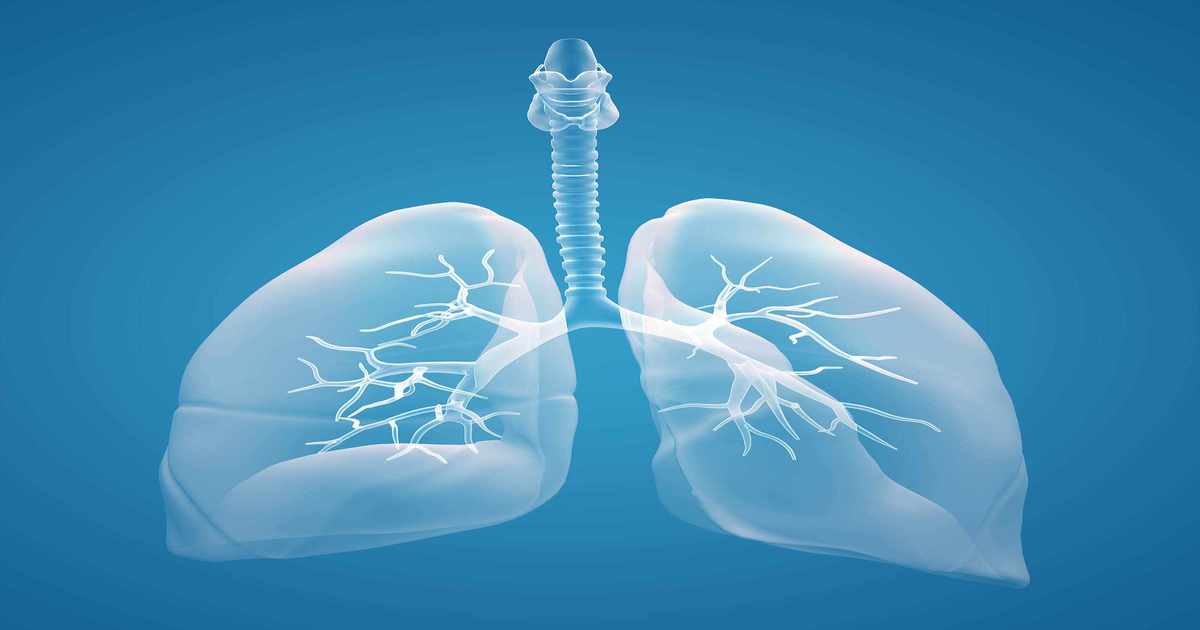Category: Asbestos Exposure

Testimony of Dr. Philip Landrigan
TESTIMONY BEFORE
United States Senate
Committee on the Judiciary
by Philip J. Landrigan, MD, MSc, DIH
Professor of Occupational and Environmental Medicine
Chairman, Department of Community and Preventive Medicine
Professor of Pediatrics
The Mount Sinai School of Medicine
“A Fair and Efficient System to Resolve Claims of Victims for Bodily Injury Caused by Asbestos, and Other Purposes”
April 26, 2005
Mr. Chairman and Members of the Committee on the Judiciary,
I am pleased to appear before you today to review the impacts that asbestos has had on the health of American workers, and to discuss the legislative remedies that have been proposed for dealing with the asbestos epidemic.
My name is Philip J. Landrigan, MD, MSc, DIH. I am a physician, a board-certified specialist in occupational medicine, and Chairman of the Department of Community and Preventive Medicine in the Mount Sinai School of Medicine in New York. I am Editor-In-Chief of the American Journal of Industrial Medicine. I am President of the Collegium Ramazzini, an international scientific society in occupational and environmental medicine. I have had many years of experience of dealing with the clinical manifestations and studying the epidemiology of the diseases caused by asbestos. A copy of my biographical sketch is appended to this testimony.
The late Irving J. Selikoff, MD, the “Father of Asbestos Research in the United States”, was one of the founders of the Department that I now chair at Mount Sinai. This Department contains New York’s largest clinical facility in occupational medicine and one of the nation’s largest research and training programs in occupational health, a program that Dr. Selikoff established 30 years ago. We have been designated by the National Institute for Occupational Safety & Health (NIOSH) as the major provider of diagnostic services to the men and women who worked at Ground Zero, the site of the World Trade Center in the terrible days and weeks that followed the attacks of September 11, 2001. We have now examined over 12,000 of those workers – police officers, firefighters, construction workers, paramedics, and building cleaners. Many of them were exposed in their work to asbestos.
The testimony that I shall be presenting today reflects the collective knowledge and experience of our occupational medicine group at Mount Sinai, and most especially the thoughts of my colleague, Stephen Levin, MD, Director of the Selikoff Center for Occupational and Environmental Medicine.
The Asbestos Epidemic
Asbestos has been and continues to be an occupational and environmental hazard of catastrophic proportion. Asbestos has been responsible for over 200, 000 deaths in the United States, and it will cause millions more deaths worldwide. The profound tragedy of the asbestos epidemic is that all illnesses and deaths related to asbestos are entirely preventable.
Clinical and epidemiologic studies, many of them initiated by Dr. Selikoff at Mount Sinai, have established incontrovertibly that asbestos is a human carcinogen. All forms of asbestos are carcinogenic. Asbestos has been shown to cause cancer of the lung, malignant mesothelioma of the pleura and peritoneum, cancer of the larynx and certain gastrointestinal cancers. Asbestos also causes asbestosis, a progressive fibrotic disease of the lungs.
Asbestos has been declared a proven human carcinogen by the Environmental Protection Agency (EPA) and by the International Agency for Research on Cancer of the World Health Organization.
Asbestos and cigarette smoke are powerfully synergistic in the causation of lung cancer. Nonsmoking asbestos workers have five times the background risk of lung cancer. Smokers who have had no exposure to asbestos have 10 times the background risk of developing lung cancer. But asbestos workers who also smoke have 55 times the background risk of lung cancer. This is the classic and best-studied example in the medical literature of a synergistic interaction between two proven human carcinogens.
New use of asbestos has almost completely ended in the United States and in most other developed nations as a result of government bans and market pressures. Those forces were stimulated by the epidemiologic studies that I have noted above and by the release of information on the carcinogenicity of asbestos that previously had been suppressed by the asbestos industry. By contrast, extensive and aggressive marketing of asbestos continues in the developing world, where sales remain strong and worker protections are too often weak.
Problems with the Proposed Fairness in Asbestos Injury Resolution Act
The proposed Fairness in Asbestos Injury Resolution Act contains serious scientific problems as currently written. It creates criteria for assessing the causation of disease by asbestos that are not based on scientific evidence and that are not consistent with current knowledge in occupational medicine.
Difficulties with the proposed exposure criteria
The bill contains medically unsupported requirements for minimum duration of exposure to asbestos.
Contrary to the requirements for minimum duration of exposure set forth in the bill, there is clear evidence from carefully conducted epidemiological studies that exposures to asbestos for even one month under heavy exposure conditions can increase the risk of lung cancer two-fold and also increase the risk of death from asbestosis.
The requirement for 5 or more weighted years of exposure to asbestos to establish a diagnosis of asbestosis is not supported by scientific evidence.
Also unsupported by the published medical literature are the minimum requirements set forth in the bill of 8, 10 or 12 years of exposure for establishment of asbestos causation in a case of lung cancer.
The bill contains a medically unsupported proposal for discounting exposures to asbestos.
The bill establishes three exposure classifications:
- Moderate exposure for persons who worked in areas that experienced “regular airborne emissions of asbestos fibers”,
- Heavy, for persons who worked in direct installation, repair or removal of asbestos, and
- Very heavy for those who worked in primary asbestos manufacturing or a WWII shipyard
Each year worked in these categories counts as 1, 2 and 4 years respectively.
However, these years of work are discounted depending on when they occurred. Every year of exposure that occurred after 1976, no matter what was the level or circumstance of occupational exposure, counts as only one half of a year. Every year of exposure that occurred after 1986 counts as only one tenth of a year.
The plan to discount exposures from 1976-1986 by half is without medical or scientific basis. Many workers had exposures during this period that were no different in intensity from those that preceded 1976.
Similarly, discounting post-1986 exposures to 1/10 the accumulated years is without medical or scientific basis. Removal or other disturbance of asbestos in place has yielded exposure levels in the past two decades that are no different from those encountered before 1986 or 1976.
It may be illustrative to see how application of this proposed discounting formula will work when applied to the situation of individual cases. It would appear, for example, that no claims for lung cancer level VII (with bilateral plaques, without asbestosis), will be paid for anyone with “moderate” exposure to asbestos prior to 1972. Or put another way, a person with lung cancer could have worked in areas with “regular airborne emissions of asbestos fibers” since 1973 and still not quality for compensation under this bill because he or she would fail to meet the substantial exposure criteria set forth in the bill.
Specifically, for lung cancer level VII (with bilateral pleural disease) a claimant would need 12 years of weighed exposure (pg 82). Only those exposures that occurred before 1976 would count at full value. If exposure for a lung cancer victim with pleural disease started in 1972, it would take 30 years of exposure to meet this 12-year exposure requirement. For every year later that the person started occupation exposure (1973, 1974 etc) it will take an extra 10 years of occupational exposure to meet the criteria for compensation in the bill. Thus a person with lung cancer and pleural plaques who began occupational exposure to asbestos in 1974 would need 52 years of work exposure (through 2025, or “until” 2026) to meet the 12-year weighted exposure criteria in the bill.
For cancers other than lung (malignant level VI) the proposed situation is still more difficult. A person with colorectal, laryngeal, esophageal, pharyngeal or stomach cancer would need 15 years of weighted occupational exposure to asbestos to qualify for compensation under this bill for any of those diseases. If all of that person’s exposure occurred after 1976 it would take 105 years to meet the criteria. This would seem an unattainable goal.
Difficulties with the proposed diagnostic criteria
The bill contains medically unsupported criteria for diagnosis of non-malignant disease.
The requirement that pleural disease be bilateral to be considered the consequence of exposure to asbestos is not warranted by medical evidence. Asbestos-related scarring often develops unevenly and almost always begins unilaterally. Miller and Lilis showed a clear relationship between degree of pleural scarring and loss of FVC independent of whether the pleural changes were bilateral.
The criteria set forth in the bill require that there be no evidence of obstructive airway disease (i.e. that the FEV1/FVC ratio be >= 0.65) in order to compensate for loss of FVC is not consistent with the medical literature. There are many cases of combined restrictive and obstructive disease in workers with airway disease and asbestos-related scarring.
The bill contains medically unsupported criteria for diagnosis of cancer
I am deeply troubled by the requirement that no lung cancer case will receive compensation without evidence of “bilateral pleural plaques, bilateral pleural thickening, or bilateral pleural calcification” (pg 82), or grade 1/0 asbestosis (pgs 83-84). In other words, lung cancer in a person who has been exposed to asbestos but who does not have asbestos-related scarring in both lungs will not be compensated, even if there is unilateral scarring/calcification. This is problematic for two reasons; one, is that many cases of lung cancer caused by asbestos occurs without any radiographic evidence of pleural plaques or asbestosis; asbestosis is not a necessary precursor to asbestos-induced lung cancer. Moreover, requiring that the damage be bilateral, has no basis in biology or medicine.
In summary, the proposed Fairness in Asbestos Injury Resolution Act establishes barriers to the diagnosis of asbestos-related disease that are arbitrary, that are not based in science, that are not based in medical knowledge, and that would appear, almost without exception, to make extremely difficult – indeed, well nigh impossible – any diagnosis of causation of disease by asbestos.
The approach to the diagnosis of disease caused by asbestos that is set forth in this bill is not consistent with the diagnostic criteria established by the American Thoracic Society. If the bill is to deliver on its promise of fairness, these criteria will need to be revised.
I shall be pleased to answer questions.
Philip J. Landrigan, M.D., M.Sc.
Chair, Department of Community and Preventive Medicine
Director, Center for Children’s Health and the Environment
Mount Sinai School of Medicine
New York, NY
Philip J. Landrigan, M.D., M.Sc. is the Ethel H. Wise Professor and Chair of the Department of Community and Preventive Medicine of the Mount Sinai School of Medicine in New York City. He holds a Professorship in Pediatrics at Mount Sinai. He directs the Mount Sinai Center for Children’s Health and the Environment. He is a board-certified specialist in pediatrics, general preventive medicine and occupational medicine.
Dr. Landrigan obtained his medical degree from the Harvard Medical School in 1967. He interned at Cleveland Metropolitan General Hospital. He completed a residency in Pediatrics at the Children’s Hospital Medical Center in Boston. In 1977, he obtained a Master of Science in occupational medicine and a Diploma of Industrial Health from the University of London.
From 1970 to 1985, Dr. Landrigan served as a commissioned officer in the United States Public Health Service. He served as an Epidemic Intelligence Service Officer and then as a medical epidemiologist with the Centers for Disease Control in Atlanta. While with CDC, Dr. Landrigan served for one year as a field epidemiologist in El Salvador and for another year in northern Nigeria.
Dr. Landrigan is an elected member of the Institute of Medicine of the National Academy of Sciences. He is Editor-in-Chief of the American Journal of Industrial Medicine and previously was Editor of Environmental Research. He has chaired committees at the National Academy of Sciences on Environmental Neurotoxicology and on Pesticides in the Diets of Infants and Children. Dr. Landrigan’s report on pesticides and children’s health was instrumental in securing passage of the Food Quality Protection Act of 1996.
In New York City, he served on the Mayor’s Advisory Committee to prevent Childhood Lead Paint Poisoning and on the Childhood Immunization Advisory Committee. He is Chair of the New York State Advisory Council on Lead Poisoning Prevention. From 1995 to 1997, Dr. Landrigan served on the Presidential Advisory Committee on Gulf War Veteran’s Illnesses. In 1997 and 1998, Dr. Landrigan served as Senior Advisor on Children’s Health to the Administrator of the U.S. Environmental Protection Agency. He was responsible at EPA for helping to establish a new Office of Children’s Health Protection.
Dr. Landrigan served from 1996 to 2005 in the Medical Corps of the United States Naval Reserve and rose to the rank of Captain. He served overseas with the Navy in London, Singapore, Korea and Ghana and was Officer-in-Charge of the West Africa Training Cruise, a medical humanitarian mission to Senegal that saw over 11,000 patients in rural West Africa in July, 2004. He has been awarded the Navy Commendation Medal (2 awards), the National Defense Service Medal, and the Secretary of Defense Medal for Outstanding Public Service.
To read more about asbestos related law in the United States information can be found here.
Sources:
- Selikoff Center for Occupational and Environmental Medicine.
http://www.mountsinai.org/patient-care/service-areas/occupational-health - International Agency for Research on Cancer of the World Health Organization
http://www.iarc.fr/ - American Thoracic Society
http://www.thoracic.org/

Asbestos-Ridden Cigarette Filters May Put Some Smokers at Risk
Mesothelioma is a unique and rare form of cancer, typically affecting the lining of the lungs, caused by exposure to asbestos fibers. Individuals primarily sickened with the asbestos-related disease were exposed to asbestos in the workplace, or through unsafe demolition or renovation practices of pre-1970 structures where asbestos was used in many of the construction materials. Most recently, rescue workers at the scene of the 9/11 terrorist attacks are at risk of mesothelioma due to the high levels of asbestos in the toxic dust cloud.
One fact that has been constant in the research of mesothelioma causes is that unlike many other predominantly pulmonary-related cancers, cigarette smoking has no known causative affect on mesothelioma incidence. Although smoking does increase the chance of getting lung cancer which is sometimes confused with mesothelioma.
However, a caveat should be added to that fact – smokers of Kent Micronite filtered cigarettes between 1952 and 1956 may be at risk of developing the disease. According to the San Francisco Chronicle, Kent’s ads promoted the Micronite filters as “the greatest health protection in cigarette history” because the filter removed more tar and nicotine than the competitor’s filters. However, it was later disclosed the Micronite tip contained highly toxic crocidolite – “African blue” – asbestos.
A study released in 1995 by the American Association for Cancer Research (AACR) found that there was no barrier or secondary filter between the end of the filter and the smoker’s mouth. Thus, the smokers inhaled or swallowed the asbestos fibers in the filters which then became lodged in their body. Because asbestos fibers are essentially indestructible, the body’s immune system is powerless to break them down.
Crocidolite was the least used asbestos in commercial products, and was often used to make asbestos-cement products. However, the AACR says the blue asbestos is “implicated most strongly as causing mesothelioma.”
The author’s of the study concluded that the evidence strongly suggests that there is an increased risk of mesothelioma among people who smoked these cigarettes. They estimate that in just one year alone, 1954, about 550,000 packs of Kent Micronite cigarettes were sold each day. The authors further concluded that “several hundred thousand people still alive [in 1995] were exposed to substantial amounts of crocidolite from smoking this cigarette.” With a latency period of 50 years or more, more mesothelioma cases may be diagnosed among the population.

Considering the Workers Facing the Risk of Mesothelioma On Labor Day
Mesothelioma is one of many cancers that is still considered to be incurable, and the tragedy is that mesothelioma is an entirely preventable disease. Associated with exposure to asbestos, mesothelioma is a cancer of the lining of the lungs, chest or abdomen that is highly aggressive and is resistant to many cancer treatments. Even small amounts of asbestos and infrequent exposure can create a risk for contracting mesothelioma or other asbestos-related diseases.
Most at-risk for developing mesothelioma are trade workers such as insulators, plumbers and pipefitters, electricians, sheet metal workers, auto mechanics, refinery and factory workers, construction workers and shipyard workers linked to asbestos exposure in workplaces.
According to the U.S. Centers for Disease Control and Prevention, an estimated 1.3 million construction and general industry workers in the United States potentially are being exposed to asbestos.
The World Health Organization estimates that asbestos causes approximately half of all deaths from occupational cancer, and 125 million people worldwide are exposed to asbestos in the workplace due to lack of knowledge about the risks.
Today, as Americans celebrate the Labor Day holiday, a federal holiday designated as a day to celebrate the economic and social contributions of workers, remember that many workers continue to endure unnecessary health risks from asbestos exposure.
Most often mesothelioma patients had been exposed to asbestos over a period of years. Mesothelioma has an extended latency period and strikes 15 to 60 years after exposure to asbestos. Each year 2,500 to 4,000 patients in the U.S. are diagnosed with mesothelioma and asbestos-related diseasesaw.

Assessing The Risk of Mesothelioma for Car Mechanics and Brake Technicians
A recent study in the International Journal of Occupational and Environmental Health suggests that automobile mechanics and car service technicians may be at risk of developing mesothelioma from exposure to asbestos-containing brake dust. Malignant mesothelioma is an aggressive type of cancer that develops in the lining of the chest cavity and is caused by the presence of asbestos fibers.
Researchers at Oregon Health & Science University and Portland State University conclude that there is a “net of evidence” favoring a causal relationship between exposure to brake dust containing chrysotile asbestos and mesothelioma. They say that the brake manufacturers’ position that there is an insufficient chain of evidence to link brake dust to mesothelioma is inaccurate. They suggest that further research is needed.
While many brakes and clutches in newer model cars do not contain asbestos, some brakes shoes and pads and clutch linings in use even today in the United States contain asbestos, according to the U.S. Environmental Protection Agency. If you work at a brake shop or a auto repair garage, you cannot determine whether brake or clutch components contain asbestos just by looking at them. But if the brakes or clutches contain asbestos, then the dust may contain asbestos.
Brake and clutch dust is often visible when a brake disk, drum or clutch cover is removed from a car or truck. The dust may contain asbestos. If you are an auto mechanic, you should not blow dust from brakes or clutches, according to EPA’s current best practices for avoiding asbestos exposure.
Using compressed air, a brush or a dry rag to clean brake assemblages has the potential to expose you to asbestos fibers, according to the U.S. Environmental Protection Agency. Compressed air blows dust into the air. Airborne dust allows the microscopic particles of asbestos to be inhaled.
Mechanics should assume that brakes have asbestos-type shoes and use brake dust control procedures, according to the Occupational Safety and Health Administration. If a mechanic assumes a brake does not contain asbestos, they may be exposed to asbestos. Exposure to asbestos can lead to mesothelioma, lung cancer and asbestosis, a chronic scarring of the lungs.
The symptoms of mesothelioma and asbestos-related disease typically take 20 years to 50 years to appear. A mechanic who worked on auto brakes in the 1960s may only recently have begun experiencing symptoms or been diagnosed with mesothelioma.
Sources:
- Study in the International Journal of Occupational and Environmental Health
http://www.tandfonline.com/action/cookieAbsent - Portland State University
https://www.pdx.edu
World Health Organization Reiterates All Forms of Asbestos Cause Cancer
The World Health Organization and the International Agency for Research on Cancer issued a joint statement Feb. 19 stating that all forms of asbestos cause cancer in humans and stopping the use of all forms of asbestos is the most efficient way to eliminate diseases caused by asbestos such as mesothelioma, a cancer of the lining of the chest and abdominal cavities.
The joint statement came in response to an article published this month in The Lancet medical journal raising questions about the IARC ‘s participation in a conference in Kiev, Ukraine and potential conflicts of interest. The IARC is participating with the Russian Scientific Research Institute of Occupational Health in a study of cancer among chrysotile workers in Asbest, Russia. The lead author of the research is Evgeny Kovalevsky, who is a promoter of chrysotile asbestos. The IARC is providing epidemiological expertise for the study.
Several prominent American health researchers including Richard Lemen, retired U.S. Assistant Surgeon General, sent a letter to the IARC saying it was unacceptable that a scientist who is a promoter of asbestos should be a lead investigator on an IARC research project. The authors of the letter noted that the World Health Organization had previously withdrawn the Russian Scientific Research Institute’s designation as a WHO collaborating center because of the institute’s conflicts of interest with the Russian asbestos industry.
In the joint statement, the WHO and IARC said the study on cancer among chrysotile asbestos workers in Asbest, Russia will provide important scientific data to quantify the risk of cancers known to be related to chrysotile, the most commonly produced asbestos fiber. In addition it may be useful in quantifying the risks of additional cancers suspected to be related to chrysotile asbestos exposure. The IARC acknowledged receiving a number of emails urging the agency not to participate in the conference.
The IARC and WHO said they take conflict of interest seriously and use a rigorous process to protect research.
According to the Lancet article, the timing of the IARC attendance at the conference and decision to collaborate in the study are particularly sensitive on the eve of an upcoming meeting of countries participating in the Rotterdam Convention. The attendees at the conference will discuss the listing of chrysotile to the Rotterdam Convention, which would require countries that import chrysotile asbestos to give prior informed consent of the health hazards it poses. Russia which has an active asbestos industry, may try to block the addition to chrysotile to the list of hazardous substances.
The heaviest burden of asbestos cancer is currently found in the United State, European countries, Australia, Japan and South Africa, according to a 2012 article in the British Journal of Cancer. The highest consumption of asbestos is in China, Russian, India, Ukraine, Thailand, Brazil and Iran, signaling that those countries will have increases in mesothelioma and asbestos-related cancer deaths in the future.
Approximately, 2,500 to 3,000 people in the U.S. die each year of mesothelioma. It is a devastating disease. Most people who are diagnosed with mesothelioma were exposed to asbestos in a workplace or during military service decades ago.
Sources :
- Lancet article
http://secure.jbs.elsevierhealth.com/action/cookieAbsent - joint statement
http://www.who.int/mediacentre/news/statements/2013/response_lancet_20130219/en/
Free Mesothelioma Patient & Treatment Guide
We’d like to offer you our in-depth guide, “A Patient’s Guide to Mesothelioma,” absolutely free of charge.
It contains a wealth of information and resources to help you better understand the condition, choose (and afford) appropriate treatment, and exercise your legal right to compensation.
Download Now